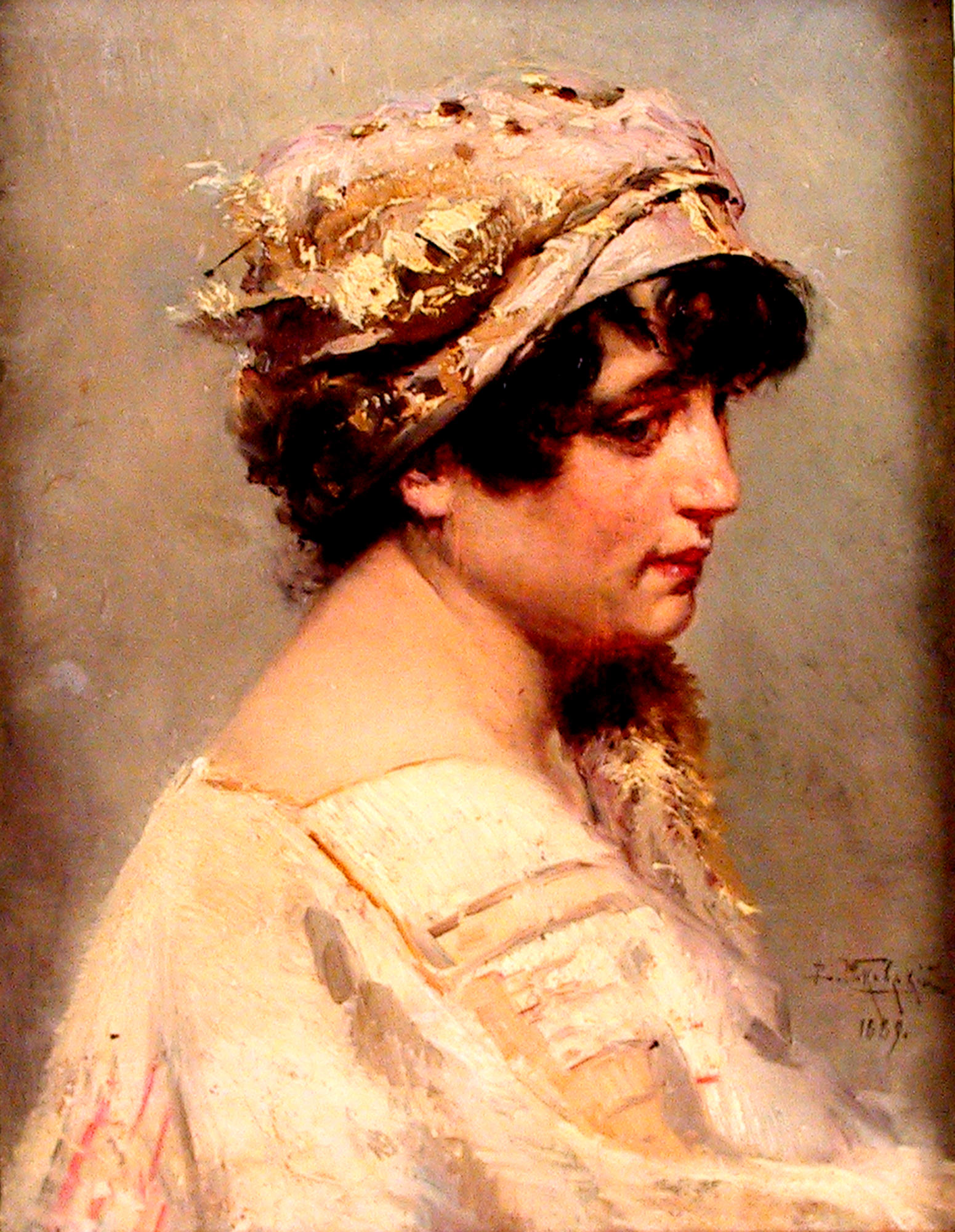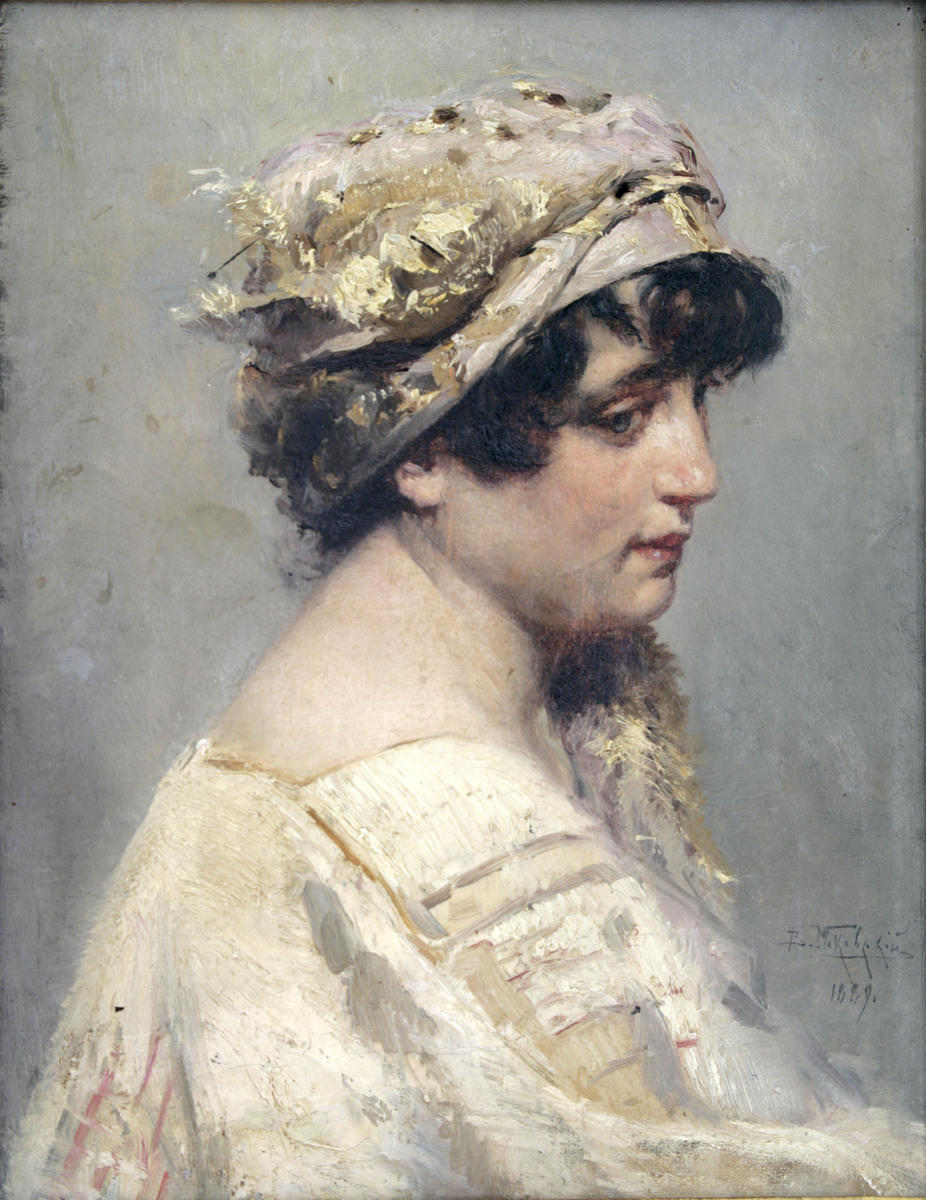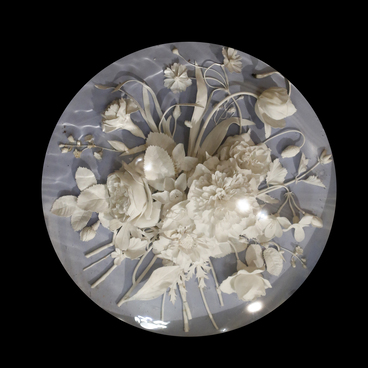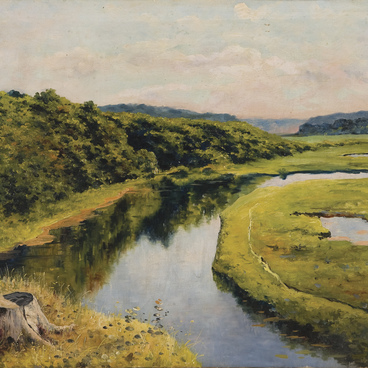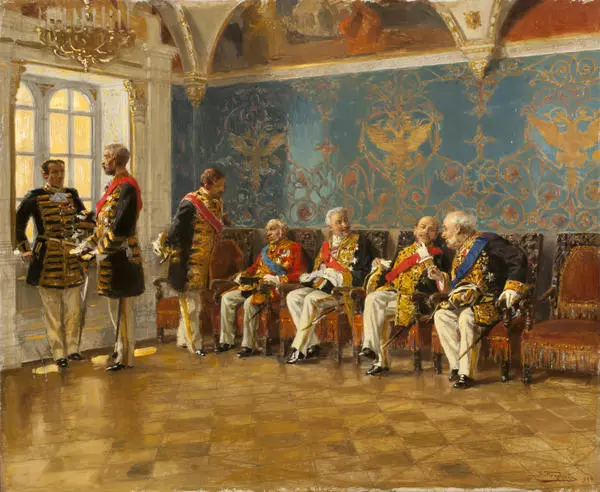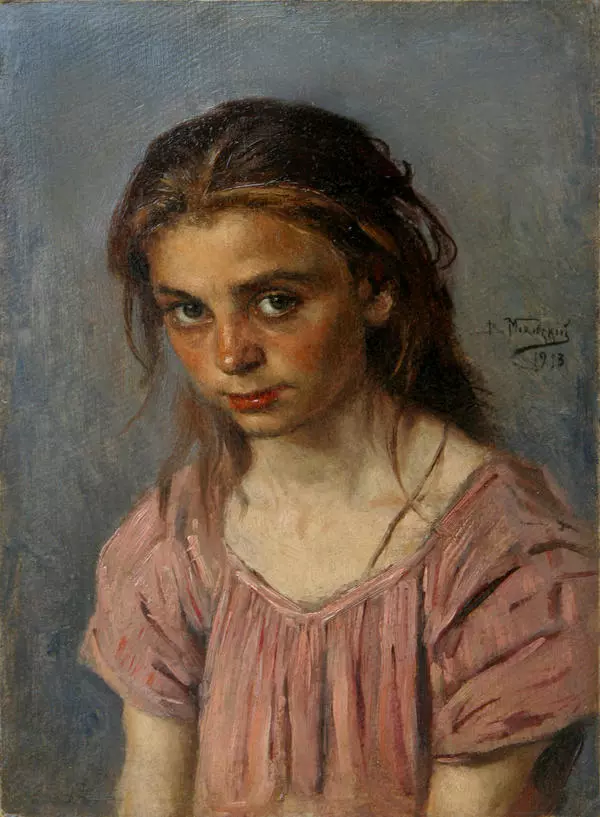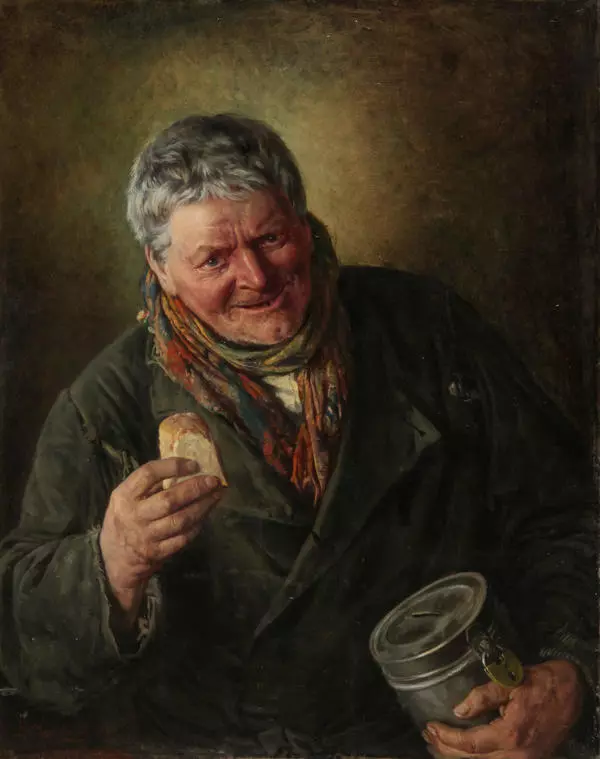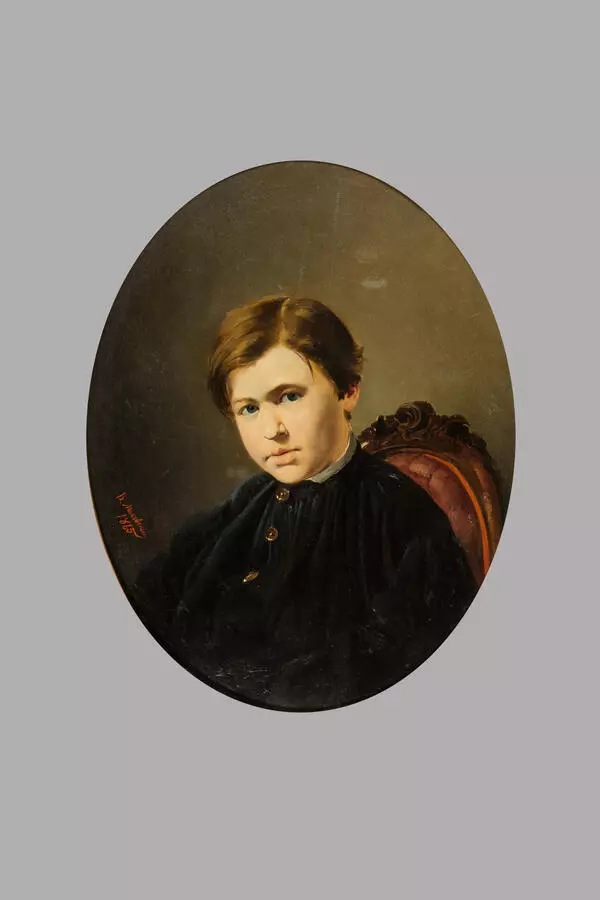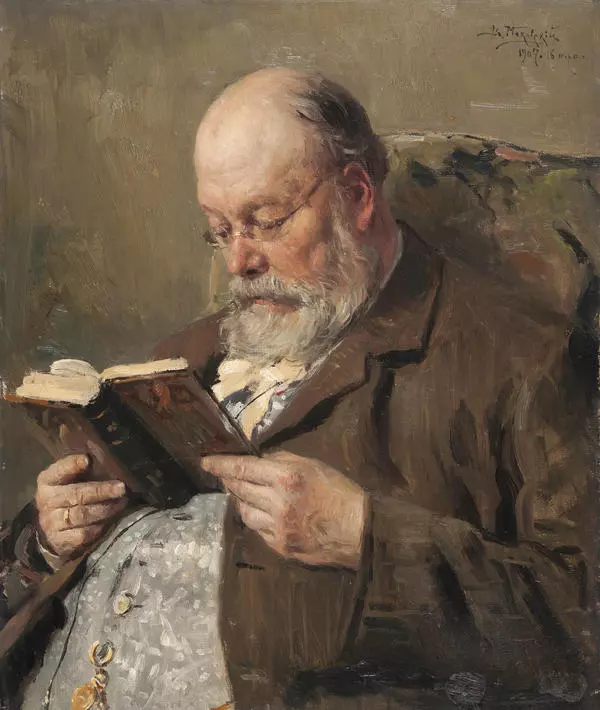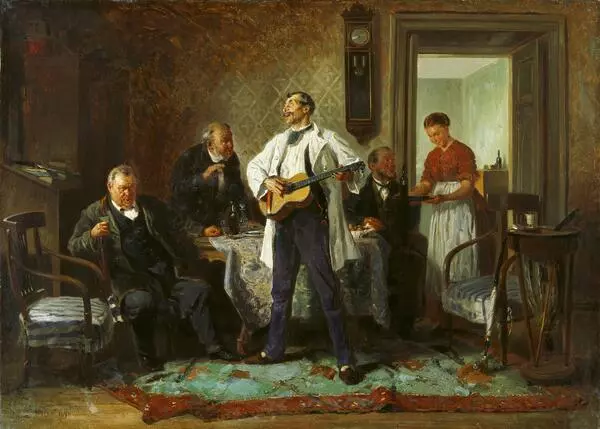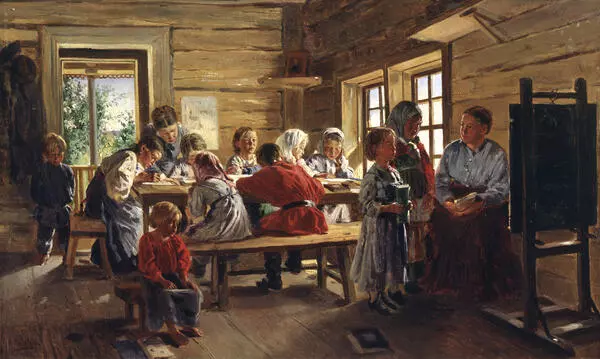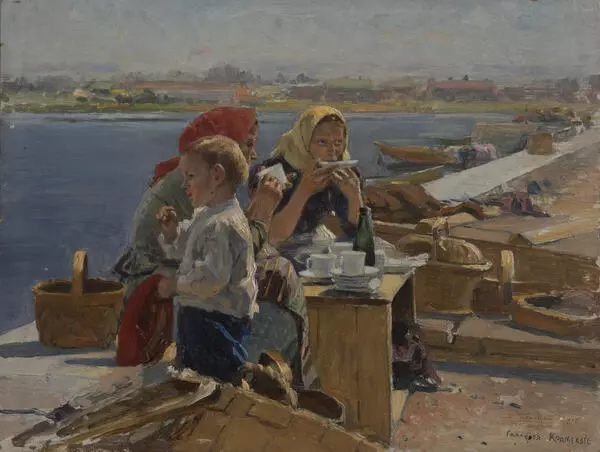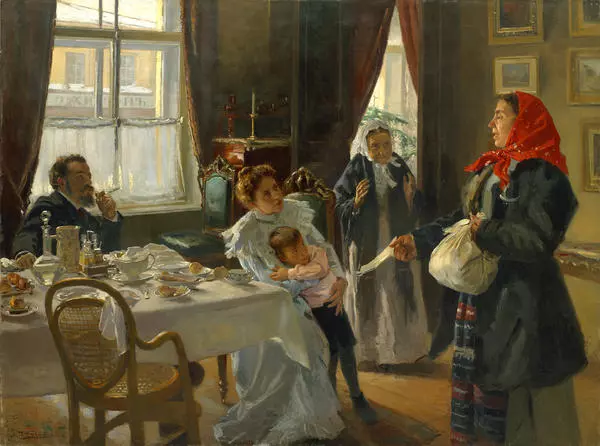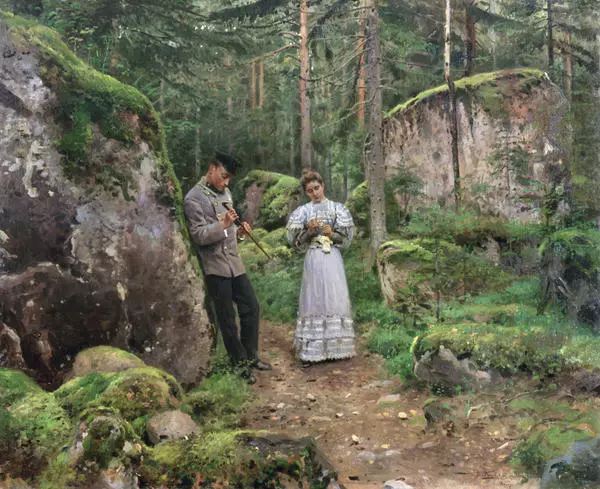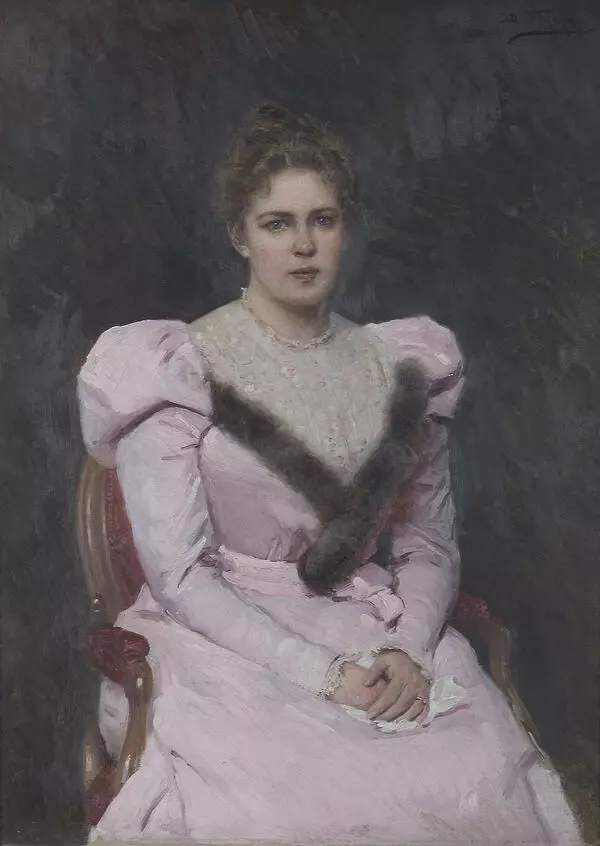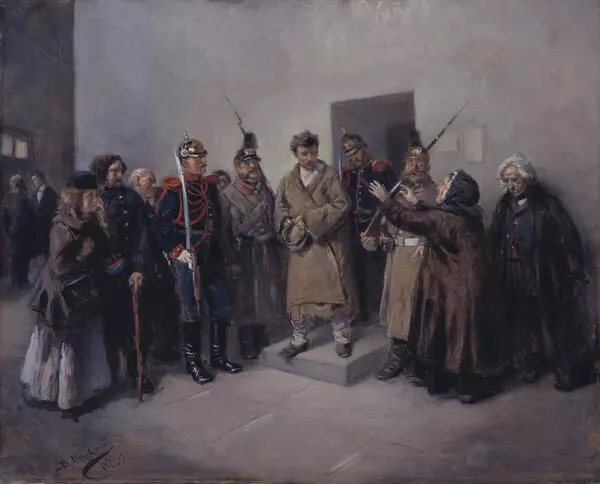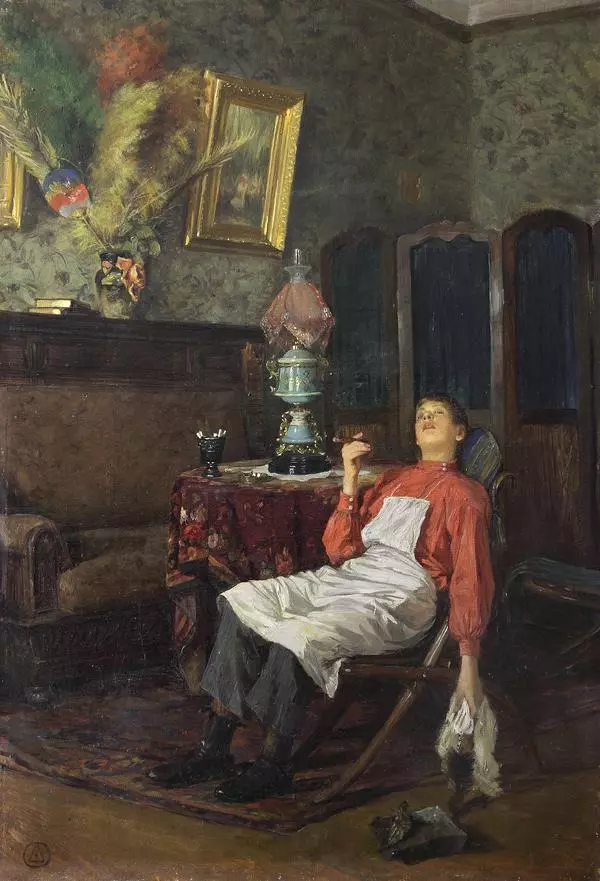Vladimir Makovsky (1846-1920) entered the history of Russian art as a painter, draftsman, watercolorist, engraver, lithographer. Makovsky was born in the family of an amateur artist in Moscow. His father was one of the founders of the nature class in 1833 in Moscow, which was transformed into the School of painting and sculpture in 1843. The most famous people of the time visited the Makovskies’ house: Glinka, Gogol, Shchepkin, Bryullov. Vladimir learned not only to paint, but also to play the guitar and violin, he inherited a good voice from his mother. He took lessons in painting from artist Tropinin. Two Makovsky’s brothers and a sister also became artists. He graduated from the School of painting and sculpture, then the Academy of Arts. In 1882-1894 he in his turn taught at the Academy.
In 1869 Makovsky had his first child, son Alexander, and he became fascinated with children’s theme in painting. The painting Knucklebones Game was the first picture by Makovsky, which was purchased by Pavel Tretyakov for his collection.
Since 1894 Makovsky had lived in St. Petersburg and directed the workshop of genre painting of the Higher Art School at the Academy of Arts. He was its rector for some time. Vladimir Makovsky participated in the painting of the Church of Christ the Savior in Moscow, created sketches of murals for the temple at the Borki station near Kharkov at the site of crash of the tsar’s train. He traveled a lot across the country and abroad. In the 1880s and 1890s he worked in Ukraine, in Orlov region, in Tiflis, in Crimea, in the Caucasus, in Finland.
Makovsky was called a ‘novelist artist “and he was best known for his genre scenes. Nevertheless, the artist also painted portraits of prominent figures of Russian culture of that time. Among them are artist Illarion Pryanishnikov, the creator of a large collection of works of Russian painting and graphics Ivan Tsvetkov, a famous scientist, collector, researcher and publisher of the ancient graphics Dmitry Rovinsky, a well-known artist and tutor Evgraf Sorokin.
The exhibition features a portrait of an Italian woman. Makovsky remained faithful to the academic tradition, yet, influence of impressionists on the work is felt.
In 1869 Makovsky had his first child, son Alexander, and he became fascinated with children’s theme in painting. The painting Knucklebones Game was the first picture by Makovsky, which was purchased by Pavel Tretyakov for his collection.
Since 1894 Makovsky had lived in St. Petersburg and directed the workshop of genre painting of the Higher Art School at the Academy of Arts. He was its rector for some time. Vladimir Makovsky participated in the painting of the Church of Christ the Savior in Moscow, created sketches of murals for the temple at the Borki station near Kharkov at the site of crash of the tsar’s train. He traveled a lot across the country and abroad. In the 1880s and 1890s he worked in Ukraine, in Orlov region, in Tiflis, in Crimea, in the Caucasus, in Finland.
Makovsky was called a ‘novelist artist “and he was best known for his genre scenes. Nevertheless, the artist also painted portraits of prominent figures of Russian culture of that time. Among them are artist Illarion Pryanishnikov, the creator of a large collection of works of Russian painting and graphics Ivan Tsvetkov, a famous scientist, collector, researcher and publisher of the ancient graphics Dmitry Rovinsky, a well-known artist and tutor Evgraf Sorokin.
The exhibition features a portrait of an Italian woman. Makovsky remained faithful to the academic tradition, yet, influence of impressionists on the work is felt.
